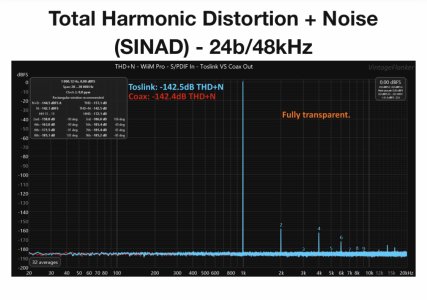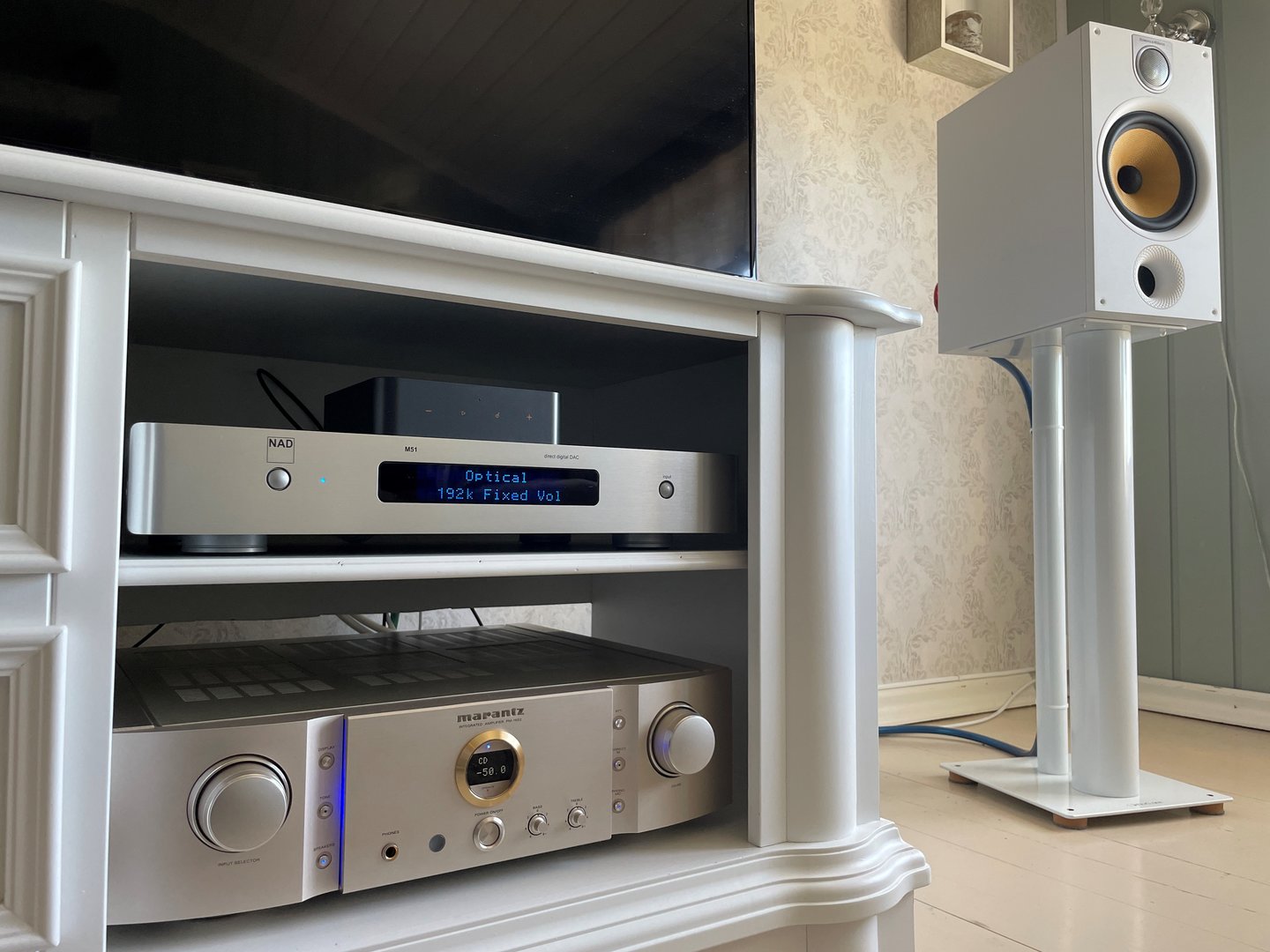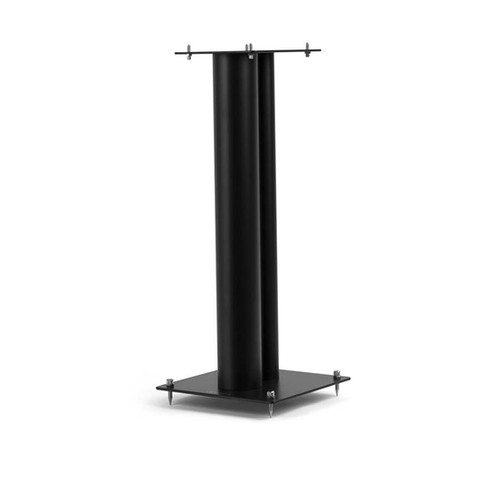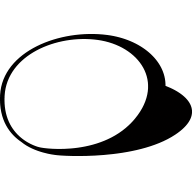Not sure what «destroyed» signal means. Any EQ with positive gain in fixed volume mode runs the risk of clipping on the S/PDIF, unless there's a limiter/compressor as samples approach full scale. A limiter is horrid, so positive gain requires headroom, which means adjusting pre-gain, hence not 'fixed'.Have the issue with «destroyed» signal when use of EQ in fixed mode been fixed in new firmware-updates since march?
You are using an out of date browser. It may not display this or other websites correctly.
You should upgrade or use an alternative browser.
You should upgrade or use an alternative browser.
Sound quality when using EQ or Volume Control
- Thread starter Erik
- Start date
I was talking about the ASR-measurements wich showed:Not sure what «destroyed» signal means. Any EQ with positive gain in fixed volume mode runs the risk of clipping on the S/PDIF, unless there's a limiter/compressor as samples approach full scale. A limiter is horrid, so positive gain requires headroom, which means adjusting pre-gain, hence not 'fixed'.
EQ off

EQ on

Setting max volume a few dB down, to provide headroom for EQ, would no longer be bit-perfect. If volume is 'fixed' then it should be transparent.
If you don't want clipping but need EQ then don't set volume fixed. Lower it a bit to provide headroom for the EQ.
If you don't want clipping but need EQ then don't set volume fixed. Lower it a bit to provide headroom for the EQ.
Brantome replied over here that the issue now is fixed, so you can use fixed volume and EQ without any clipping/distortion.Setting max volume a few dB down, to provide headroom for EQ, would no longer be bit-perfect. If volume is 'fixed' then it should be transparent.
If you don't want clipping but need EQ then don't set volume fixed. Lower it a bit to provide headroom for the EQ.
That was surely the issue where -1dB gain occurred automatically when GEQ was on but 'flat'.Brantome replied over here that the issue now is fixed, so you can use fixed volume and EQ without any clipping/distortion.
no...sorry...and you can test easly ...Brantome replied over here that the issue now is fixed, so you can use fixed volume and EQ without any clipping/distortion.
It's about fixed volume and EQ with flat settings, not about fixed volume and any EQ settings. Positive gain must be compensated with the volume level to avoid clipping.Brantome replied over here that the issue now is fixed, so you can use fixed volume and EQ without any clipping/distortion.
Kysoccercrazy
Member
- Joined
- Mar 1, 2023
- Messages
- 15
What if the total EQ gain is negative. Would it matter if volume is fixed.It's about fixed volume and EQ with flat settings, not about fixed volume and any EQ settings. Positive gain must be compensated with the volume level to avoid clipping.
Thanks for the clarificationIt's about fixed volume and EQ with flat settings, not about fixed volume and any EQ settings. Positive gain must be compensated with the volume level to avoid clipping.
Please let me know what are those white monitors stands (I would need similar)?Thanks, didnt know about measurements.
I have have not dared to use the EQ since I use fixed volume info my NAD Masters M51 DAC.

Please let me know what are those white monitors stands (I would need similar)?

STYLUM 2 | Norstone
The Stylum range of feet has been designed by an audiophile for audiophiles. The adjustable top and bottom tips provide an ideal fit for flawless stability. Extremely rigid, these stands effectively contribute to improving the bass of the speakers.
 en.norstone-design.com
en.norstone-design.com
steadyshot
Major Contributor
- Joined
- Mar 14, 2023
- Messages
- 712
Do you have it filled with something ? Any difference between filled or not ? ( do you hear any ringing if Empty?) I would like to buy these stands
STYLUM 2 | Norstone
The Stylum range of feet has been designed by an audiophile for audiophiles. The adjustable top and bottom tips provide an ideal fit for flawless stability. Extremely rigid, these stands effectively contribute to improving the bass of the speakers.en.norstone-design.com
Last edited:
Yes, filled with sand. Did it from the start so cant say anything about difference in SQ. Each speaker incl stand weighs 18kgs. Placed on weight-matched soft dampingfeet from Sonic Design.Do you have it filled with something ? Any difference between filled or not ? ( do you hear any ringing if Empty?) I would like to buy these stands
Last edited:
Steve Woodhouse
Major Contributor
- Joined
- Aug 11, 2023
- Messages
- 625
As a newbie to all this…
Okay, so I should set the WiiM to ‘Fixed output volume’.
Does PEQ still work in this mode (WiiM Pro)?
I’ll be sending audio out over coax to an external DAC. Will the PEQ damage the sound (clipping, etc.)?
If not, great. But if it does, I presume this can be negated by reducing the overall gain control.
Is this correct? If so, is there a formula for how much to reduce it?
Cheers.
Okay, so I should set the WiiM to ‘Fixed output volume’.
Does PEQ still work in this mode (WiiM Pro)?
I’ll be sending audio out over coax to an external DAC. Will the PEQ damage the sound (clipping, etc.)?
If not, great. But if it does, I presume this can be negated by reducing the overall gain control.
Is this correct? If so, is there a formula for how much to reduce it?
Cheers.
G
Guest1
Guest
And trust your ears! Why asking for a formula when you can easily try and error what suits you? And I am also sure you will not destroy any of your hardware with trying and playing around with the settings  . May be you can hear such "distortions" earlier or later than others.
. May be you can hear such "distortions" earlier or later than others.
G
Guest1
Guest
Smooth operating recommended 
Added: There is always a silly or a reasonable way to get a result. Guess which one starting at 100 % is.
Added: There is always a silly or a reasonable way to get a result. Guess which one starting at 100 % is.
Last edited by a moderator:
Steve Woodhouse
Major Contributor
- Joined
- Aug 11, 2023
- Messages
- 625
If there's fixed/100% volume and positive EQ gain, then the output could clip. Lower the volume sufficiently to provide headroom for the largest EQ gain.
Thanks. So if the largest was say +5db at 100hz, then cut volume by 5db?
So would it make a difference if you had a 5db boost at 100hz + a 4db boost at 2khz? Still just cut by 5db, or a cumulative 9db?
Cheers.
Steve Woodhouse
Major Contributor
- Joined
- Aug 11, 2023
- Messages
- 625
And trust your ears! Why asking for a formula when you can easily try and error what suits you? And I am also sure you will not destroy any of your hardware with trying and playing around with the settings. May be you can hear such "distortions" earlier or later than others.
My question was to ask whether or not there was a hard-set formula which mathematically ensures any possible distortion caused by boosted EQ is compensated for by a calculated cut in overall volume.
I don’t see that this question has any relevance to subjective listening, as such. Or rather, it negates the need.
If, mathematically, any increase in signal of (as in the example) 5db at 100hz will be completely negates by a 5db cut in volume, why would I need to get through possible lengthy and time-consuming listening tests, straining to see if I could hear the tiniest amount of distortion, if maths can give me the answer in 5 seconds?
Don’t get me wrong, if I use the mathematical model and I can still hear distortion, that’s different, and I go again.
But if there’s a simple, tried and trusted method, based on sound principles, which when used shows no measurable distortion, why would anyone not want to use that?
Similar threads
- Replies
- 6
- Views
- 450
- Replies
- 4
- Views
- 3K
- Replies
- 7
- Views
- 541
- Replies
- 0
- Views
- 219

